

 Photography by John Jackson
Photography by John Jacksonhere’s no doubting the traditional build style of this ’29 Ford roadster. It’s how Jon Cumpton of Roberts, Wisconsin, went about it, guided by the trained eye of Jordan Dickinson, Mike Norrie, and the staff of Union Speed and Style (US&S) of Osseo, Minnesota. Here’s how to build a traditional-looking A/V8 hot rod yet have it be so like-minded with today’s driving practices.
It was in Jon’s mind that he wanted a postwar hot rod, or what we commonly have come to call a “traditional build.” In his eyes he saw a Model A sedan but a visit to US&S changed that dream. It didn’t take long after eyeing a Model A roadster with Dickinson that the plans changed. The traditional look was paramount but along with this newly minted hot rod it had to be driveable. That would be the result, a driveable, traditional A/V8 hot rod with the looks and performance to keep Jon happy and often behind the wheel.
The ’29 Ford roadster with its minimal channel is a driver that includes a 500-plus mile road trip where Jon and his son, Heart, went from home to Des Moines and back. To this the hot rod has taken home the Goodguys Editor’s Choice and Goodguys Builder’s Choice by Hot Rods by Dean. Over 3,000 miles have been racked up with plenty more to come.
Rick Schnell took a running Flathead out of a ’40 Ford and began the rebuild. He processed the machinework through final assembly, which included the obligatory porting and relieving oftentimes performed on a Flathead block. Edelbrock cylinder heads with a Thickstun high-rise dual carb manifold was bolted to the block and then a pair of Stromberg 48 carbs were attached. Feeding the fuel is a Carter pump and you will note the Thickstun air cleaner. Adding to the vintage appearance are cloth-covered wires with Rajah 90-degree plug ends, a Blue Streak coil, and a PerTronix distributor. Exiting the spent gases are a pair of custom-built headers coupled with straight pipes measuring 2-inch stainless tubing all fabricated at US&S. We would mention mufflers but we are pretty sure we would get a “Hell no!” Other engine accessories include the Powermaster starter and PowerGen alternator and a GC High Performance fan.
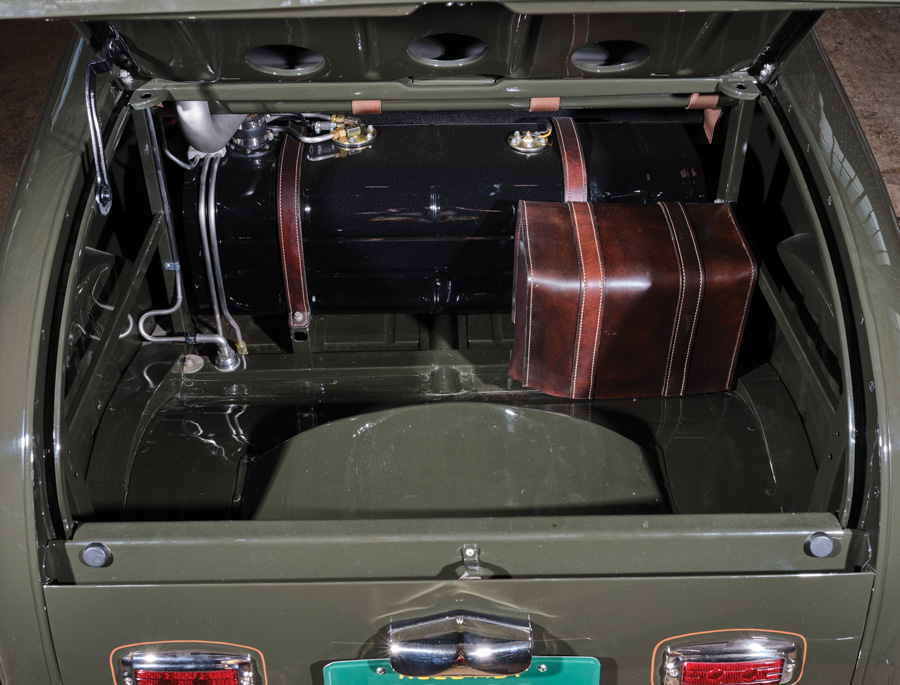
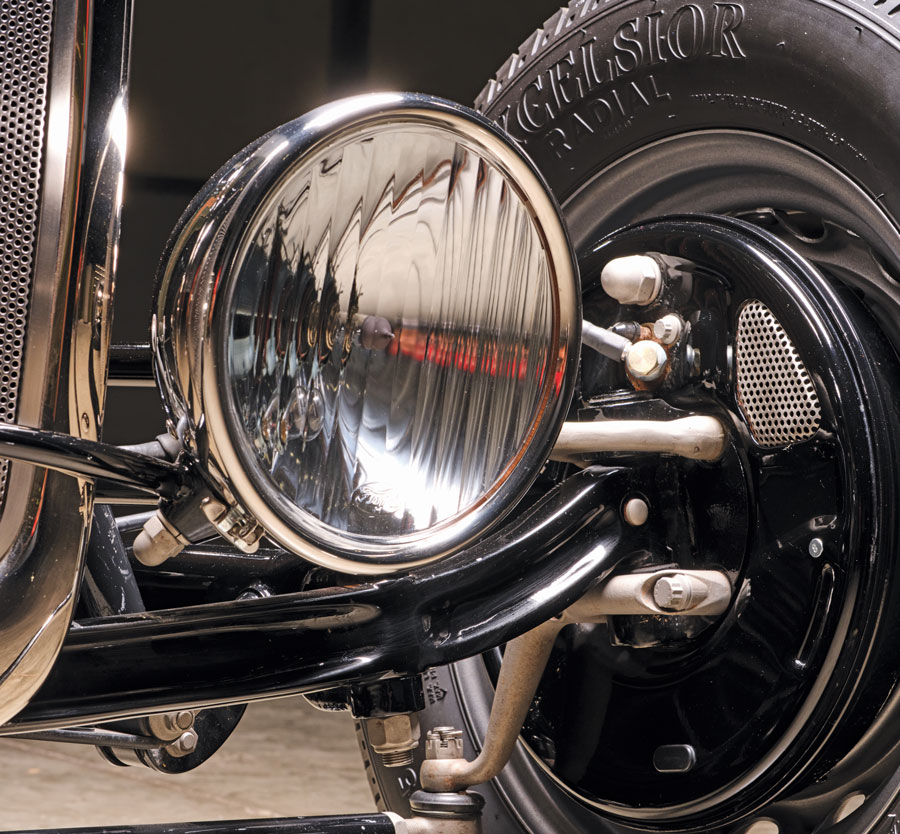

The stamped repop Deuce framerails were modified by US&S. These ’rails were recontoured to better match the flow of the Brookville Model A roadster body. The front framehorn area was also “pinched” to bring together the frame to the width of the Model A grille shell. Look closely and you will notice that the body has a subtle 1-inch channel over the ’rails enhancing the appearance. The boxing plates were drilled and dimpled, US&S then used their dimpled X-members. US&S Model A–style front and rear crossmembers were then fitted yielding a one-off frame.
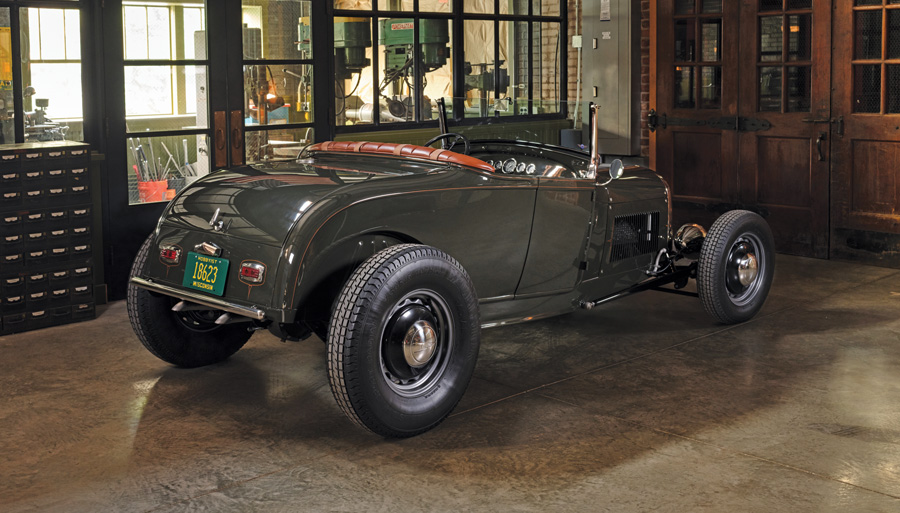
You will find that this hot rod rolls around on Ford artillery wheels with a “wide five” bolt pattern (5-on-5.5). The original 16-inch wheels are wrapped with Coker/Excelsior Stahl Sport, 5.50R16s in front and 7.50R16s in back.
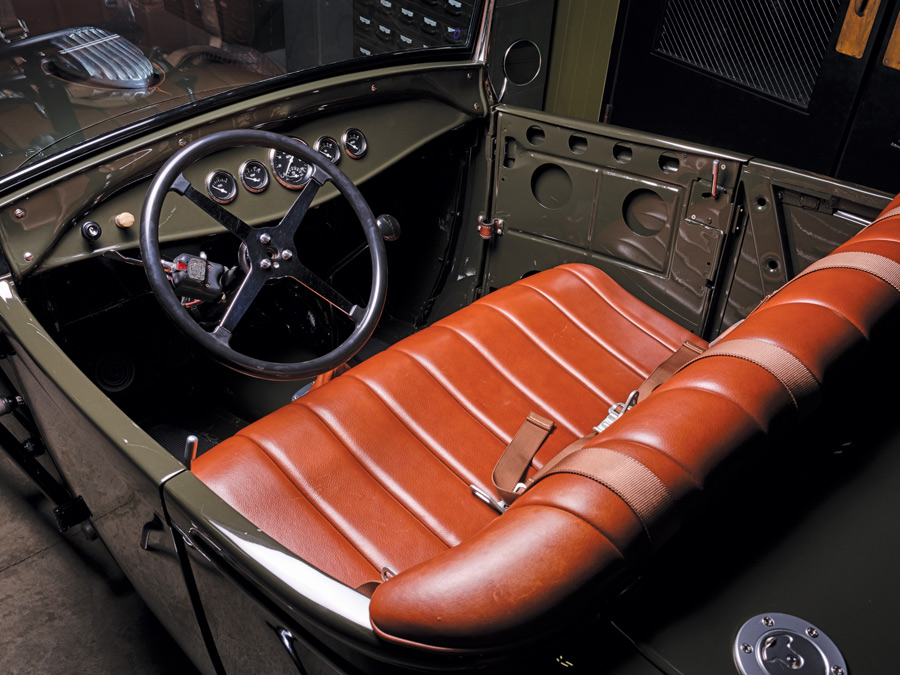

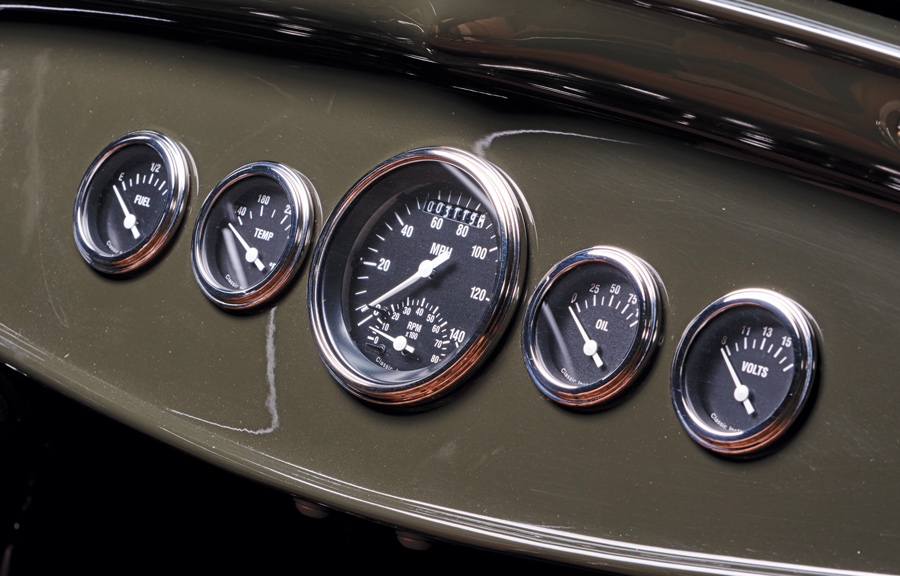
(Editor’s note: For ’28-29 Model A fans you will notice that the vertical bodyline, where the cowl, just forward of the door hinge mounting position, meets the frame, there’s a slight forward upward “swoop.” On a stocker, just below this point, you would see a leftover mounting point from the days when these bodies were originally crafted by woodworkers who made wooden wagons before steel bodies. Every now and then we see builders remove this element; nice touch. —B.B.)
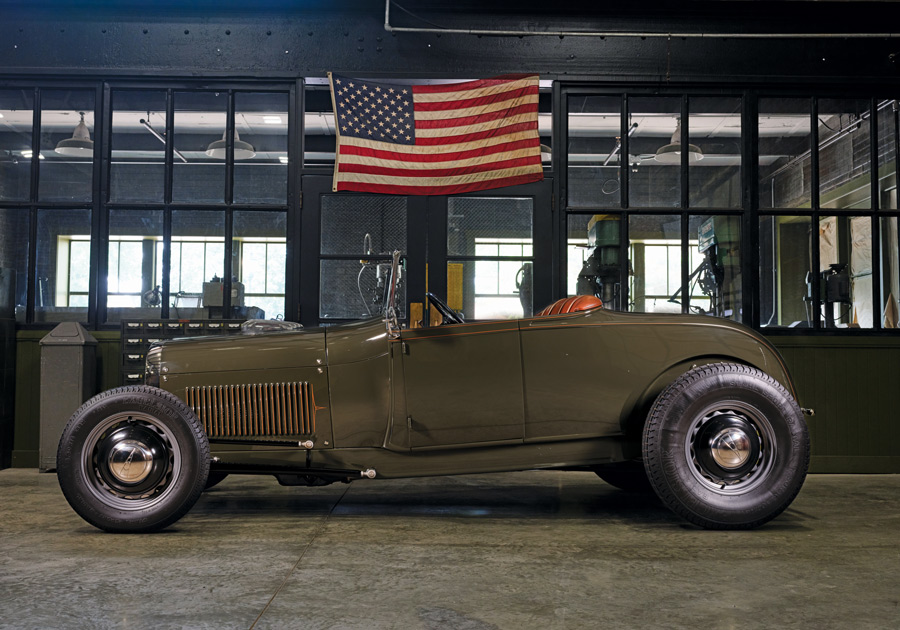
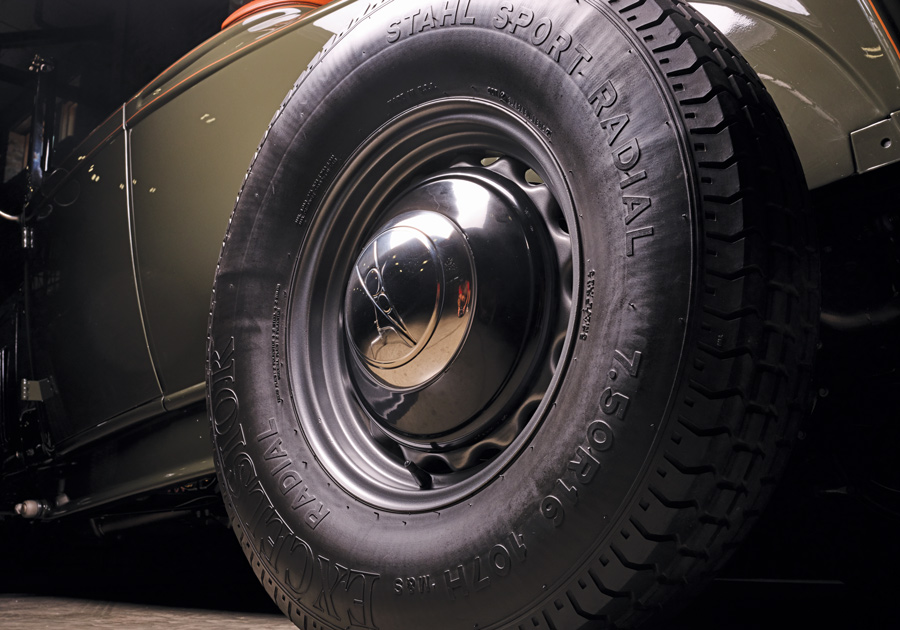
The grille shell is another interesting style point. The “widow’s” peak was removed by Jon. Then US&S went to work by shortening the grille and the radiator fill cap area was removed. The grille shell was now smooth with the opening reworked for a newly fabricated stainless grille insert and surround. This necessitated a US&S custom-made aluminum three-piece hood. It features louvers and custom recessed “bump outs” for the Dzus fasteners, giving the roadster a lakes race car feel.
The foundation for the Dark Brewster Green (an original Model A color that came in a light and dark version) on the Brookville Roadster body was handled by Shane Hanson of Paint by Shane. From here the nifty pinstriping was applied by Jeremy Pedersen of Relic Kustoms. Lighting is a combo of stock Model A headlights (stainless buckets) with fluted lenses on a US&S custom-made dropped bar and ’46-48 Keiser/Frasier taillights. There’s also a custom-made “bump bar” that serves a purpose as well as an added detail with the twice pipes peeking from below. There’s an external race car–style gas filler for the trunk-housed gas tank. Both the tank and AGM battery (leather covered) are held in position with US&S-fabricated leather straps.
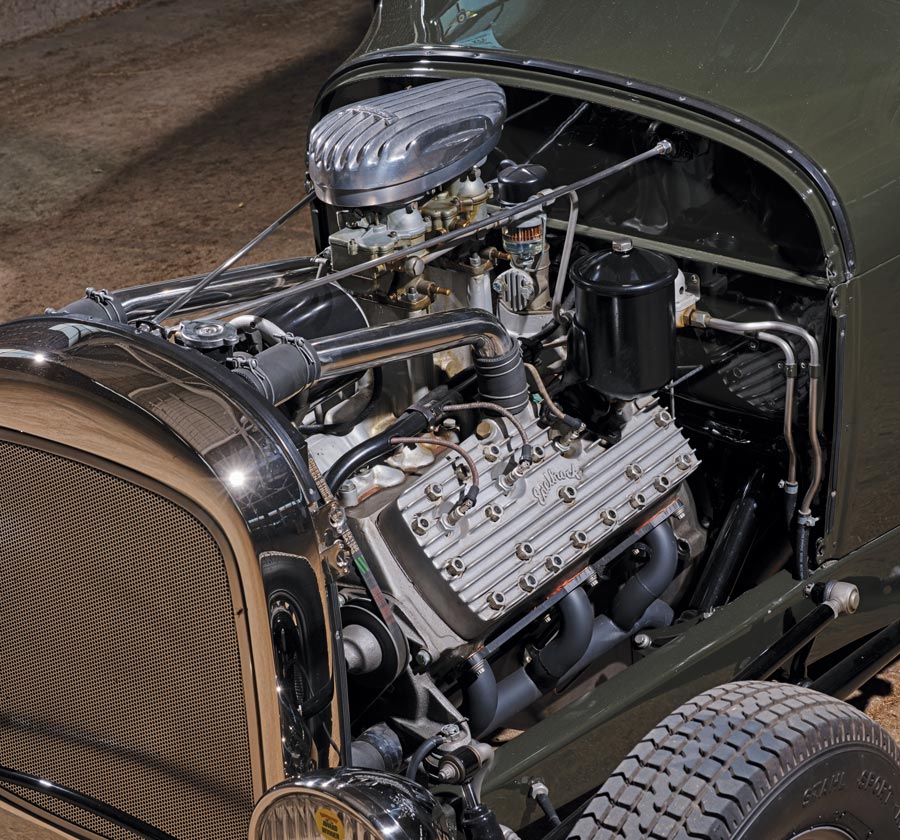
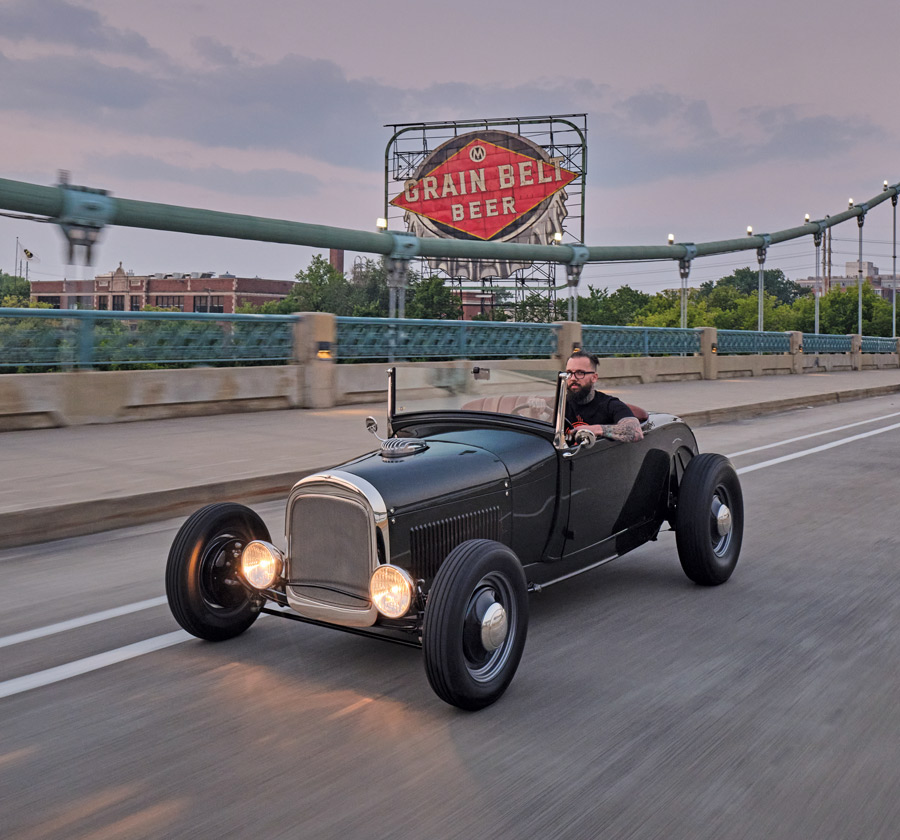
It was Dickinson who penned the quote, “Drive ’em, don’t hide ’em” that fits so well with the intention of this build and the reality. (More on Union Speed can be seen on their website: unionspeedandstyle.com.) We couldn’t agree more. There’s no doubt should you get out often there’s the chance your paths will cross.